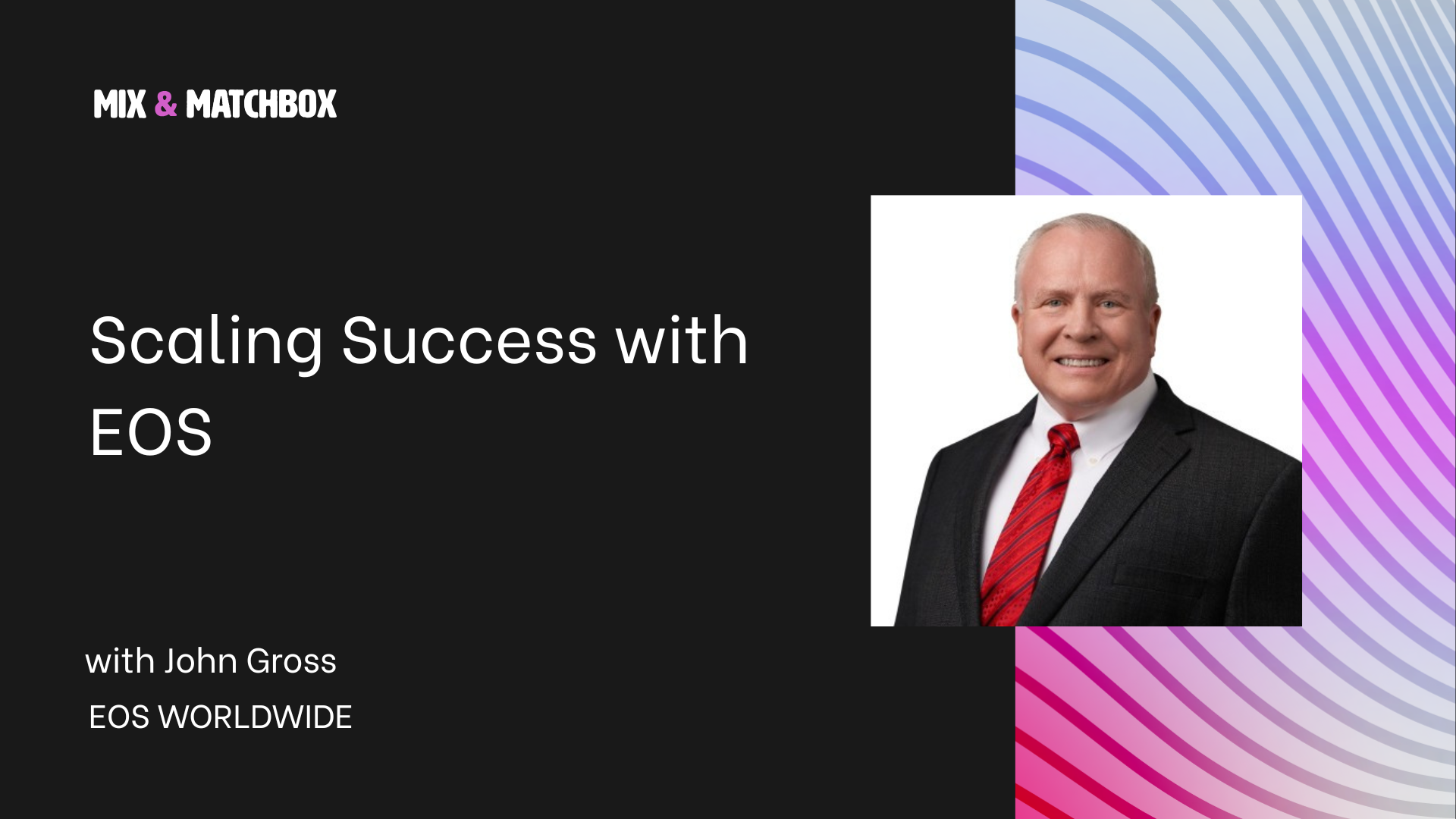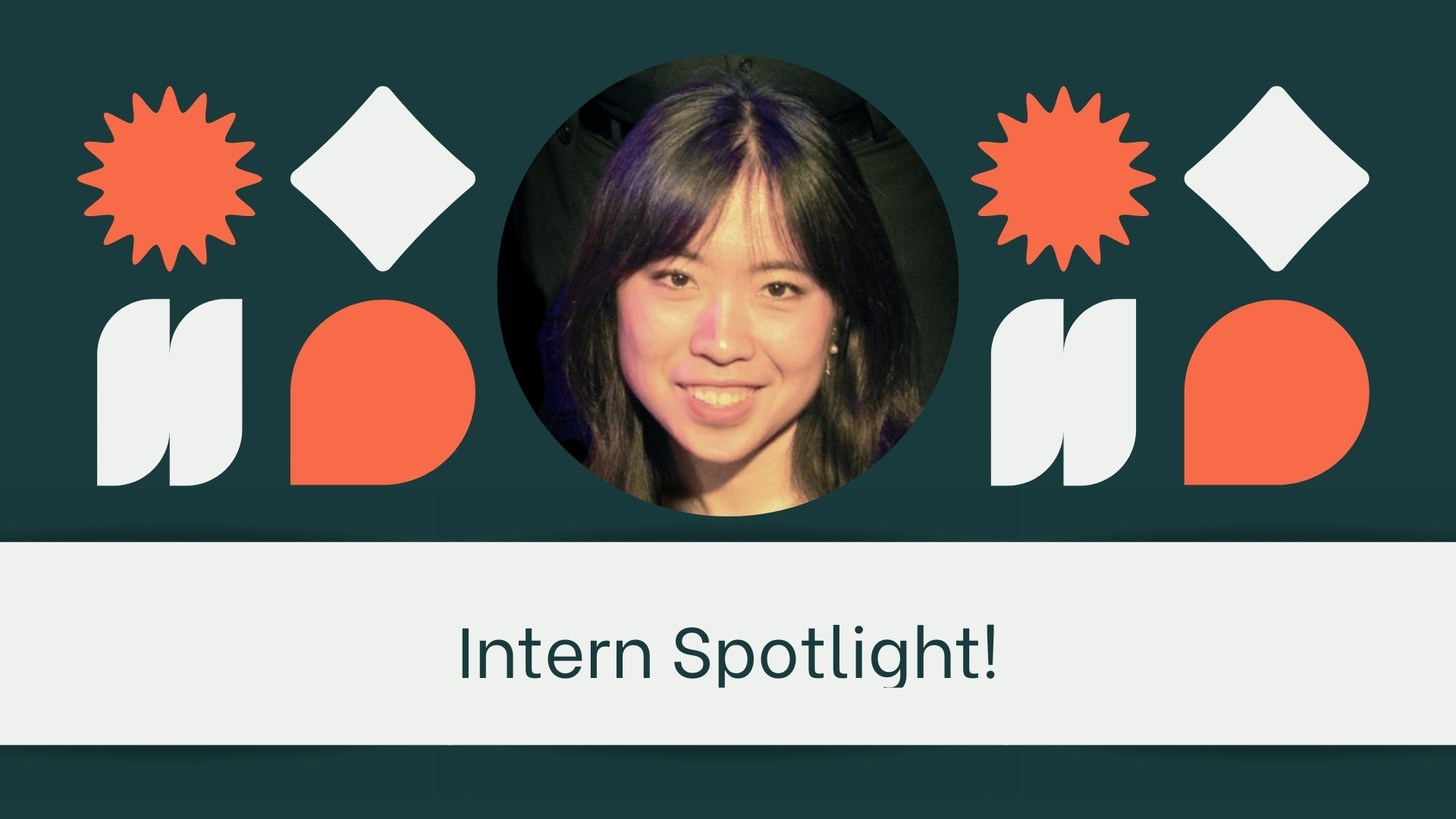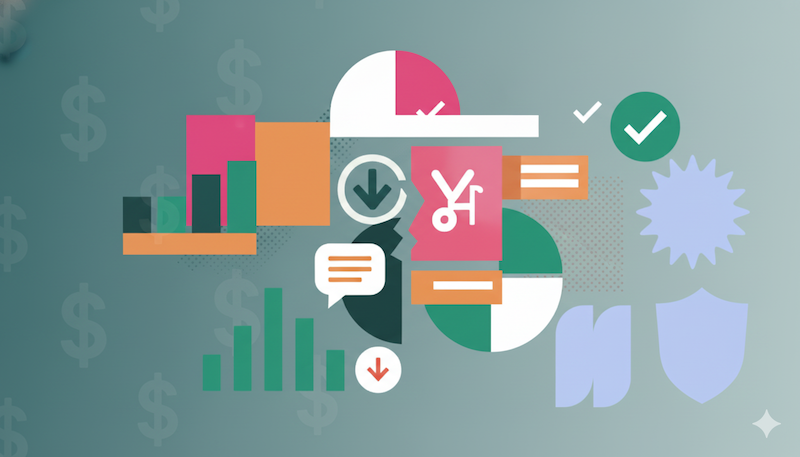Estimated reading time: 9 minutes
Mix & Matchbox Podcast – Episode 69
As business owners and leaders, we’re all too familiar with the constant “firefighting” that can consume our days – the endless stream of urgent issues, the lack of clarity around roles and responsibilities, and the feeling that our companies are running us, rather than the other way around. But what if there was a proven system to help us regain control, drive sustainable growth, and build a business that truly serves our vision and lifestyle?
Enter the Entrepreneurial Operating System (EOS), a comprehensive framework designed to help small and mid-sized businesses achieve their goals. In this in-depth blog post, we’ll dive into the insights of John Gross, an experienced EOS Implementer and part of the EOS Worldwide team, to uncover the power of this transformative system.
From Engineering to Entrepreneurship
John’s path to becoming an EOS Implementer is a testament to the value of diverse experiences. Starting out in the Air Force as an engineer, John went on to hold various roles in manufacturing, including plant engineer, production management, and site operations. Along the way, he honed his skills in Lean Six Sigma, a discipline focused on improving operational efficiency.
But it was John’s insatiable curiosity, problem-solving mindset, and desire to help others that ultimately led him to the world of EOS. As he explains, “I love to fix problems, and I really like helping people. I’m terrible at saying no.” This willingness to take on new challenges and learn from every experience has been a hallmark of John’s career, and it’s a mindset that serves him well as an EOS Implementer.
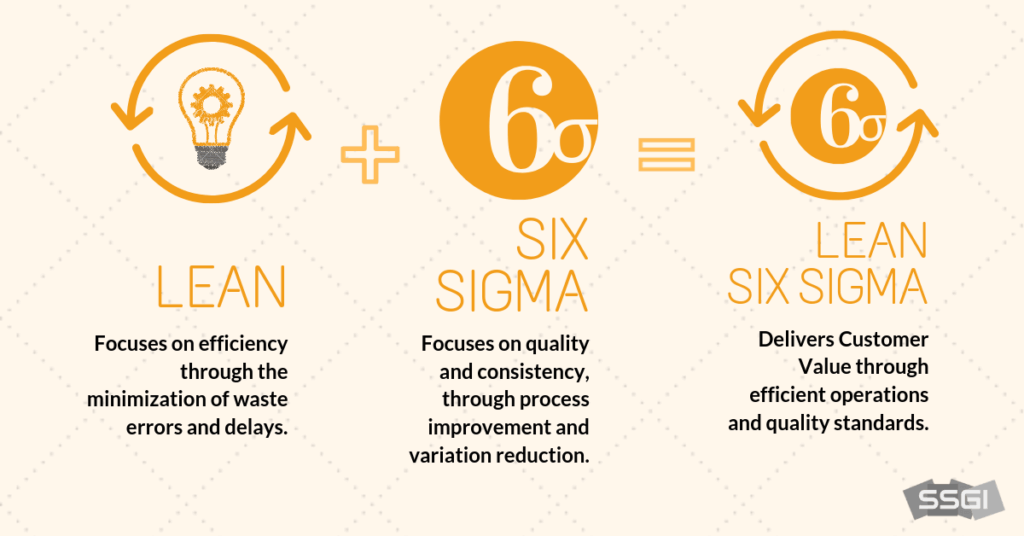
Image Source: Six Sigma Global Institute
Bridging the Gap: Connecting Lean/Six Sigma and EOS
While John’s engineering background and Lean Six Sigma expertise have been invaluable in his EOS work, he’s quick to point out the key differences between the two approaches. “Lean Six Sigma is focused on flowing work and reducing variation, while EOS is focused on execution at the leadership level,” he explains.
John’s past experiences have given him a unique perspective that he can draw upon when working with his EOS clients. “My Lean Six Sigma experience really helps me when I’m solving problems and facilitating these different groups,” he says. “I’ve got a lot of cycles of learning and I’ve seen a lot of different kinds of problems literally all over the US and all over the world.”
This cross-pollination of skills and knowledge allows John to bring a well-rounded approach to his EOS engagements, helping clients address both operational and strategic challenges.
The Six Key Components of EOS
- Vision: Establishing a clear, shared vision for the business
- People: Ensuring the right people are in the right seats
- Data: Using data to drive decision-making
- Issues: Identifying and resolving the issues holding the business back
- Process: Documenting and improving the company’s core processes
- Traction: Gaining traction and accountability in executing the plan
At the heart of EOS is the idea that by strengthening these six key components, businesses can break free from the cycle of “firefighting” and achieve sustainable growth.
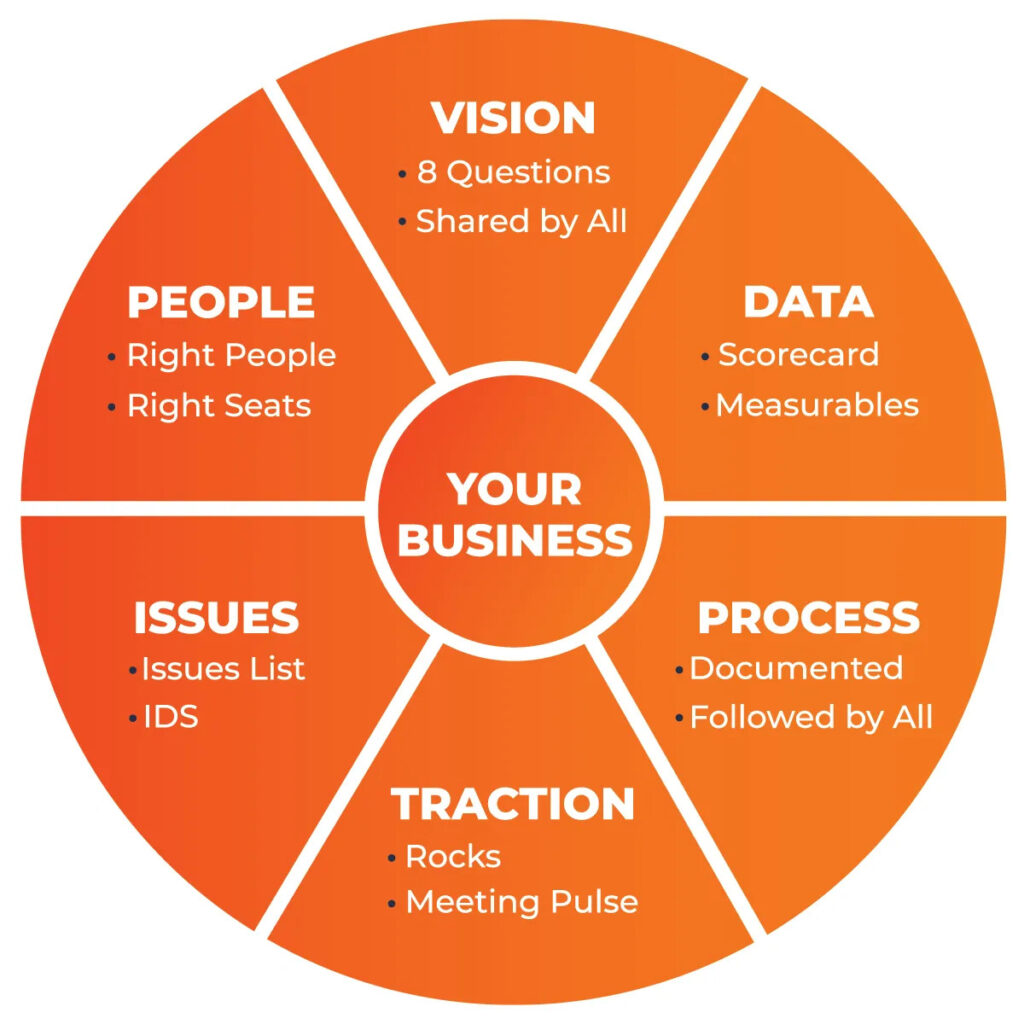
The Biggest Challenge: Getting Leadership to Change
One of the primary hurdles John encounters when implementing EOS is getting the leadership team to embrace the necessary changes. “From day one, we’re asking them to rethink how they do business — and for many, that’s tough after years of doing things a certain way. Often, there’s at least one person, sometimes several, who don’t believe there are any real issues that need to be addressed.”
This resistance to change is understandable, as business owners and leaders have often found success through their existing methods. However, John’s role as an EOS Implementer is to challenge these preconceptions and help the team see the issues that are holding them back.
“Our job is to challenge them — to help them see the issues holding them back,” he says. “Otherwise, they stay stuck on the same treadmill, fighting the same fires day after day.”
Tools Used in the EOS System
The EOS (Entrepreneurial Operating System) equips leadership teams with practical tools to bring structure, clarity, and accountability to their business. Each tool serves a specific purpose within the system, helping teams strengthen the Six Key Components™—Vision, People, Data, Issues, Process, and Traction.
Two of the most impactful tools are the People Analyzer™ and the Accountability Chart, both of which focus on getting the right people in the right seats. These tools give leaders a clear, objective way to evaluate team members, define roles, and ensure everyone is aligned with the company’s values and goals.
The Power of the People Analyzer
One of the key tools in the EOS toolbox is the People Analyzer, which helps leadership teams assess the strengths and weaknesses of their team members. “Used properly, the People Analyzer will help you to diagnose your people issues,” John explains. “The key is using it properly, which means doing it collaboratively with all members of your leadership team.”
The People Analyzer aims to:
- Assess whether team members consistently exhibit the company’s core values.
- Evaluate whether team members are in the right seats based on their skills and abilities.
- Provide a framework for constructive feedback and coaching.
By approaching the People Analyzer as a team, leaders can avoid the pitfalls of individual bias and arrive at a more objective assessment of their talent. Moreover, the People Analyzer provides a structured framework for delivering feedback and coaching, helping team members understand how they can improve and grow within the organization.
The Accountability Chart: Clarifying Roles and Responsibilities
Another critical component of EOS is the Accountability Chart, which John describes as “an org chart on steroids.” Unlike a traditional organizational chart, the Accountability Chart goes beyond simply depicting the reporting structure to clearly define the roles, responsibilities, and accountabilities of each team member.
The Accountability Chart aims to:
- Define the major functions and roles within the organization.
- Clarify who is accountable for what, preventing overlap and gaps.
- Help prepare the business for future growth and scaling.
This level of clarity is especially important in small and mid-sized businesses, where owners and leaders often find themselves wearing multiple hats. “When you’re in a function, you need to act as a function owner, and you are not an owner at that point,” John explains. “You are working with the Integrator and respecting their decision as a rule of the game.”
By establishing this structure first and then aligning the right people to the roles, the Accountability Chart helps businesses prepare for future growth and scaling, ensuring that the organization is set up for long-term success.
Real-World Success Stories: Seeing the Impact of EOS
As an experienced EOS Implementer, John has had the privilege of witnessing the transformative impact of the system firsthand. He shares several success stories that highlight the tangible benefits businesses can achieve:
- Growth and Succession Planning: One client was able to successfully create a succession plan and grow their business.
- Increased Valuation: Another client used the EOS process and structures to sell their business, ultimately doubling their valuation.
- Private Equity Platform Growth: A private equity firm leveraged EOS to consolidate and focus their portfolio companies, then used the system to acquire additional businesses and build a platform for growth.
These examples illustrate the versatility of EOS, as it can be applied to businesses of all sizes and stages, from family-owned enterprises to private equity-backed organizations. Regardless of the specific context, the common thread is the ability of EOS to help leaders gain clarity, focus, and the discipline to execute on their vision.
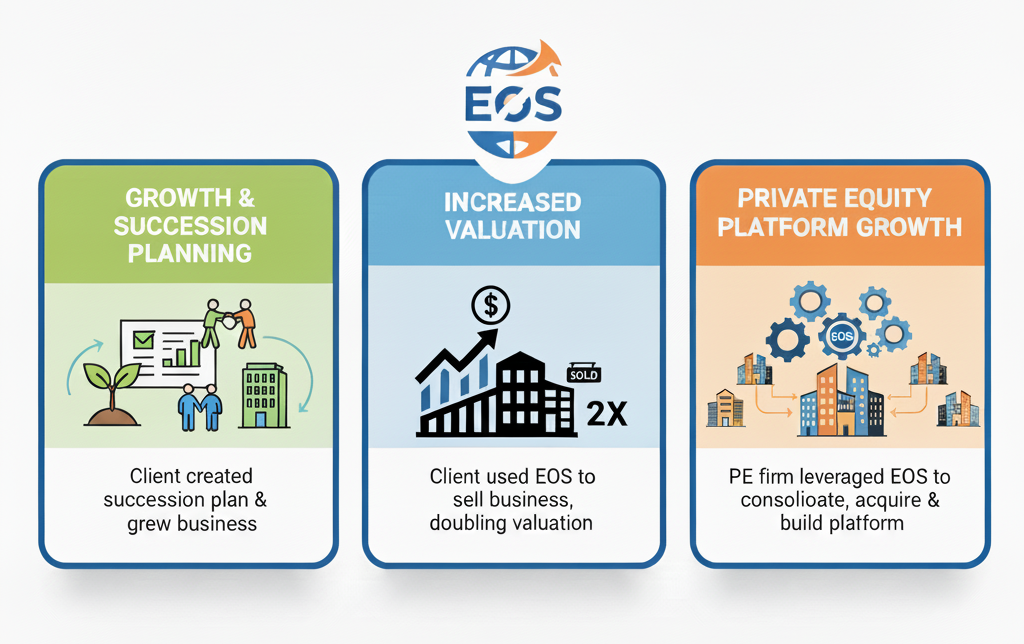
John’s Top Tip for Business Owners: Implement the Whole System
When asked for his single most important piece of advice for business owners, John emphasizes the importance of implementing the full EOS system, rather than cherry-picking individual components.
“If you’re going to implement the Entrepreneurial Operating System, commit to the full process,” he says. “EOS is designed to strengthen all six key components of your business, and you won’t get the same value if you cherry-pick pieces of it. In fact, doing so can create unintended consequences that hold you back from the results you’re aiming for.”
John also stresses the importance of building the Accountability Chart with a “structure first, people second” approach, rather than basing it on the current strengths and weaknesses of the team.
Finally, John reminds business owners that implementing EOS is a journey, not an overnight transformation. “Build your Accountability Chart for the next 6 to 12 months — not for what the business might look like 3 to 5 years from now,” he explains. “Sure, it’ll change over time, but if you don’t focus on growing in the next year, you’ll never reach that long-term vision.”
Unlocking Your Business’s Full Potential with EOS
Whether you’re struggling with persistent operational challenges or seeking to drive sustainable growth, EOS may be the transformative system you’ve been searching for. By partnering with an experienced EOS Implementer like John Gross, you can navigate the journey with guidance, support, and the confidence that you’re building a business that truly serves your vision and lifestyle.
If you’re not quite ready to fully commit, the EOS Academy is a great place to start. This free online learning hub offers videos, tools, and resources to help you understand the EOS Model™ and begin applying its concepts at your own pace.
To learn more about EOS and explore how it could benefit your organization, visit the EOS Worldwide website or connect with John directly at johndrivingchangeinc@gmail.com or 636-667-0579. It’s time to stop fighting fires and start scaling your success.
Never Miss an Episode
Get more insights on design, marketing, and all things digital. Subscribe to our Mix & Matchbox YouTube channel and join the conversation.
Want to Be Featured?
We love connecting with fellow creatives, marketers, and industry pros. If you’d like to share your story or expertise on the Mix & Matchbox podcast, let’s chat.
